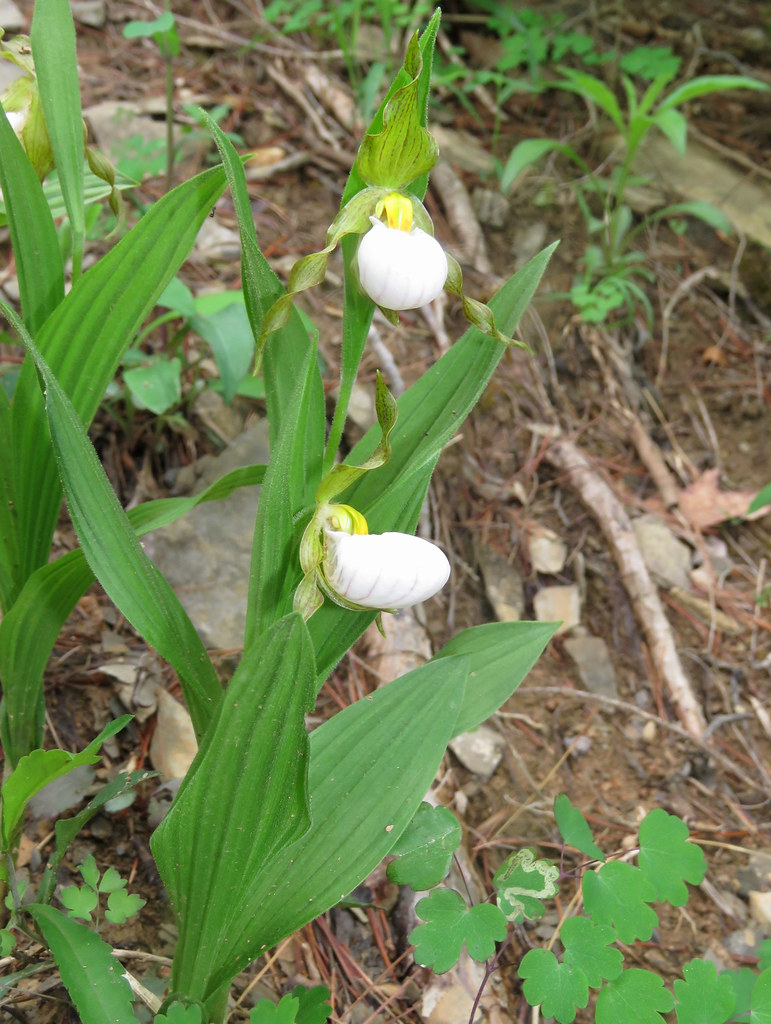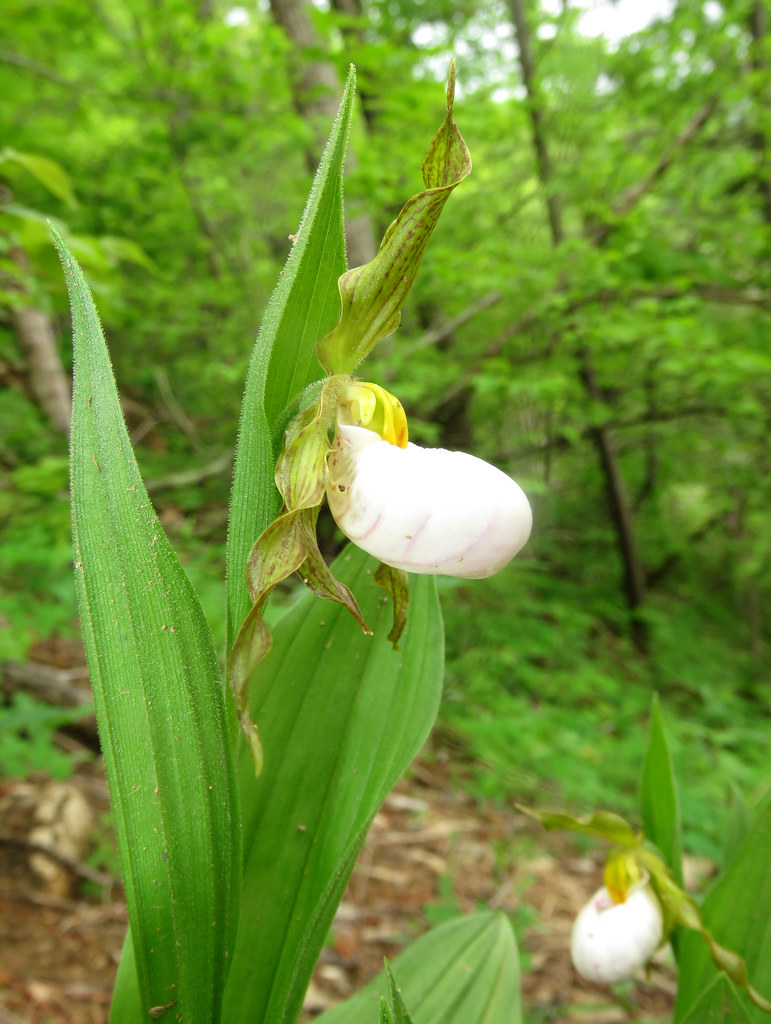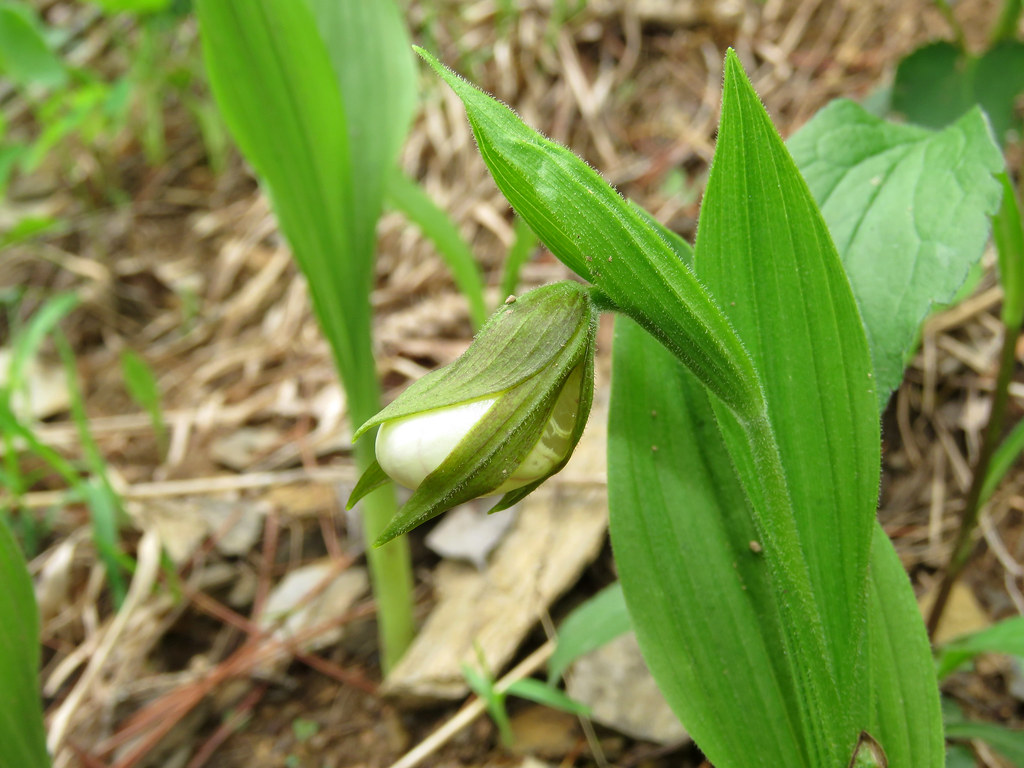Map Snapshot


12 Records
Seasonality Snapshot
Source: Wikipedia
| Small white lady's slipper | |
|---|---|

| |
| Scientific classification | |
| Kingdom: | Plantae |
| Clade: | Tracheophytes |
| Clade: | Angiosperms |
| Clade: | Monocots |
| Order: | Asparagales |
| Family: | Orchidaceae |
| Subfamily: | Cypripedioideae |
| Genus: | Cypripedium |
| Species: | C. candidum
|
| Binomial name | |
| Cypripedium candidum Muhl. ex Willd.
| |
| Synonyms | |
|
Calceolus candidus (Muhl. ex Willd.) Nieuwl. | |
Cypripedium candidum, known as the small white lady's slipper or white lady's slipper, is a rare orchid of the genus Cypripedium. It is native to eastern North America across the northern United States and southern Canada.
Distribution
[edit]Cypripedium candidum is found from western New York, across southern Ontario to North Dakota, and south to New Jersey and Missouri. There are isolated populations of Cypripedium candidum in Connecticut, Maryland,[3] Manitoba,[4] Virginia, Alabama, and (formerly) Saskatchewan.[5][6] It is found in alkaline wetland[4] and fens, often fragmented[7] in rich, highly calcareous soils, sedge meadow edges, and calcareous ditches.
Description
[edit]Cypripedium candidum grows to a height of 20 to 36 cm (7.9 to 14.2 in) and is one of the smallest species of North American Cypripedium.[8] It blooms from late May to early June.[9][10] Its white pouch-like lip, sometimes dotted with maroon on the inside, is accented by tan, green or brown lateral sepals and petals.[11] It has been known to hybridize[7] with the small yellow ladyslipper, C. parviflorum var. makasin, resulting in the natural hybrid Cypripedium × andrewsii. The leaves and stems are slightly pubescent. The plants grow in (generally) long-lived clumps, with some clumps having up to 50 or more flowers. It is a perennial, with horizontal, wiry-rooted rhizomes growing a few centimeters below the surface of the soil, and hence resistant to most prairie fires.
Conservation
[edit]
Cypripedium candidum is considered rare across Canada, endangered in Ontario, and protected under the Ontario Endangered Species Act. It is believed to be extirpated from Saskatchewan. In Ontario, this orchid has never been common due to limited occurrences of fens in its southern Ontario range. It is now known from only two sites in Ontario. It is threatened in the United States, extirpated from Pennsylvania, endangered in South Dakota and Wisconsin, Kentucky, and Michigan, and rare in Missouri and North Dakota. In Illinois, it was listed as endangered in 1980, downgraded to threatened in 1998, and delisted in 2014, when the Illinois Endangered Species Protection Board considered it to be "recovered and/or more common than originally thought".[8] It is listed in Canada as N2, or endangered. Globally, however, it is listed as G4 (apparently secure) because there are protected sites across its entire range.
Habitat loss due to fragmentation through agriculture and development, suppression of fire, incursions by invasive species, especially reed canary grass (Phalaris arundinacea), dogwood (Cornus sp.), leafy spurge (Euphorbia esula), St. John's wort (Hypericum spp.), and buckthorn (Rhamnus spp.), changes in hydrology, loss of pollinators, hybridization[7] and environmental challenges to the obligate mycorrhizae that support this species are all responsible for its decline. It also has a low seed set caused by often unpollinated flowers.[12] Pollinators for this flower include andrenid and halictid bees.[10] They are observed entering the lip of the flower from the opening to deposit pollen on the stigma while simultaneously brushing the anther to pick up more pollen.[13]
Like many wild orchids, this species has been further endangered by collecting for generally futile attempts at cultivation. It is shade-intolerant and therefore requires substantial management for invasive and woody species as part of any species recovery strategies.[8] Long-term monitoring of this species is being done through various scientific organizations, including the Chicago Botanic Garden's Plants of Concern program.[8] Woody encroachment is considered the greatest modern threat to monitored small white lady's slipper populations in the Chicago region.[8] The Plants of Concern program found significantly more lady's slipper plants when prescribed burning and brush removal were conducted compared to sites without the employment of these management tools.[8]
References
[edit]- ^ Rankou, H. (2014). "Cypripedium candidum". IUCN Red List of Threatened Species. 2014: e.T43315514A43327624. doi:10.2305/IUCN.UK.2014-1.RLTS.T43315514A43327624.en. Retrieved 20 November 2021.
- ^ Catling, P.M., and G. Knerer. 1980. Pollination of the small white lady's-slipper (Cypripedium candidum) in Lambton County, southern Ontario. Canadian Field-Naturalist. 94(4):435-438. Coffin, B., and L. Pfannmuller, editors. 1988. Minnesota's endangered flora and fauna. University of Minnesota Press, Minneapolis, Minnesota. 473 pp. Kartesz, J.T. 1994. A synonymized checklist of the vascular flora of the United States, Canada, and Greenland. 2nd edition. 2 vols. Timber Press, Portland, OR.
- ^ "Archived copy". Archived from the original on 2009-05-01. Retrieved 2009-01-23.
{{cite web}}: CS1 maint: archived copy as title (link) - ^ a b Brownell, V.R. 1981. COSEWIC status report on the small white Lady’s-slipper Cypripedium candidum in Canada. Committee on the Status of Endangered Wildlife in Canada. Ottawa. 63 pp.
- ^ NRCS. "Cypripedium candidum". PLANTS Database. United States Department of Agriculture (USDA).
- ^ "Cypripedium candidum". County-level distribution map from the North American Plant Atlas (NAPA). Biota of North America Program (BONAP). 2014.
- ^ a b c Environment Canada. 2014. Recovery Strategy for the Small White Lady’s-slipper (Cypripedium candidum) in Canada [Proposed]. Species at Risk Act Recovery Strategy Series. Environment Canada, Ottawa. v + 30 pp.
- ^ a b c d e f "Cypripedium candidum | Plants of Concern". Archived from the original on 2017-04-02. Retrieved 2017-04-02.
- ^ "Cypripedium candidum (small white lady's-slipper): Plant Phenology". iNaturalist.org. Retrieved 2018-10-31.
- ^ a b Bowles, Marlin L. (1983). "The Tallgrass Prairie Orchids Platanthera leucophaea (Nutt.) Lindl. and Cypripedium candidum Muhl. ex Willd.: Some Aspects of Their Status, Biology, and Ecology, and Implications Toward Management". Natural Areas Journal. 3 (4): 14–37. ISSN 0885-8608. JSTOR 43915824.
- ^ Ontario Ministry of Natural Resources and Forestry. 2016. Recovery Strategy for the Small White Lady’s-slipper (Cypripedium candidum) in Ontario. Ontario Recovery Strategy Series. Prepared by the Ontario Ministry of Natural Resources and Forestry, Peterborough, Ontario. iv + 4 pp. + Appendix v + 30 pp. Adoption of Recovery Strategy for the Small White Lady’s-slipper (Cypripedium candidum) in Canada (Environment Canada 2014).
- ^ Walsh RP, Arnold PM, Michaels HJ. 2014. Effects of pollination limitation and seed predation on female reproductive success of a deceptive orchid. AoB Plants 6: plu031; doi:10.1093/aobpla/plu031
- ^ Catling, P.M., & Knerer, G. (1980). Pollination of the small white lady's-slipper (Cypripedium candidum) in Lambton County, Southern Ontario.
External links
[edit] Media related to Cypripedium candidum at Wikimedia Commons
Media related to Cypripedium candidum at Wikimedia Commons Data related to Cypripedium candidum at Wikispecies
Data related to Cypripedium candidum at Wikispecies













